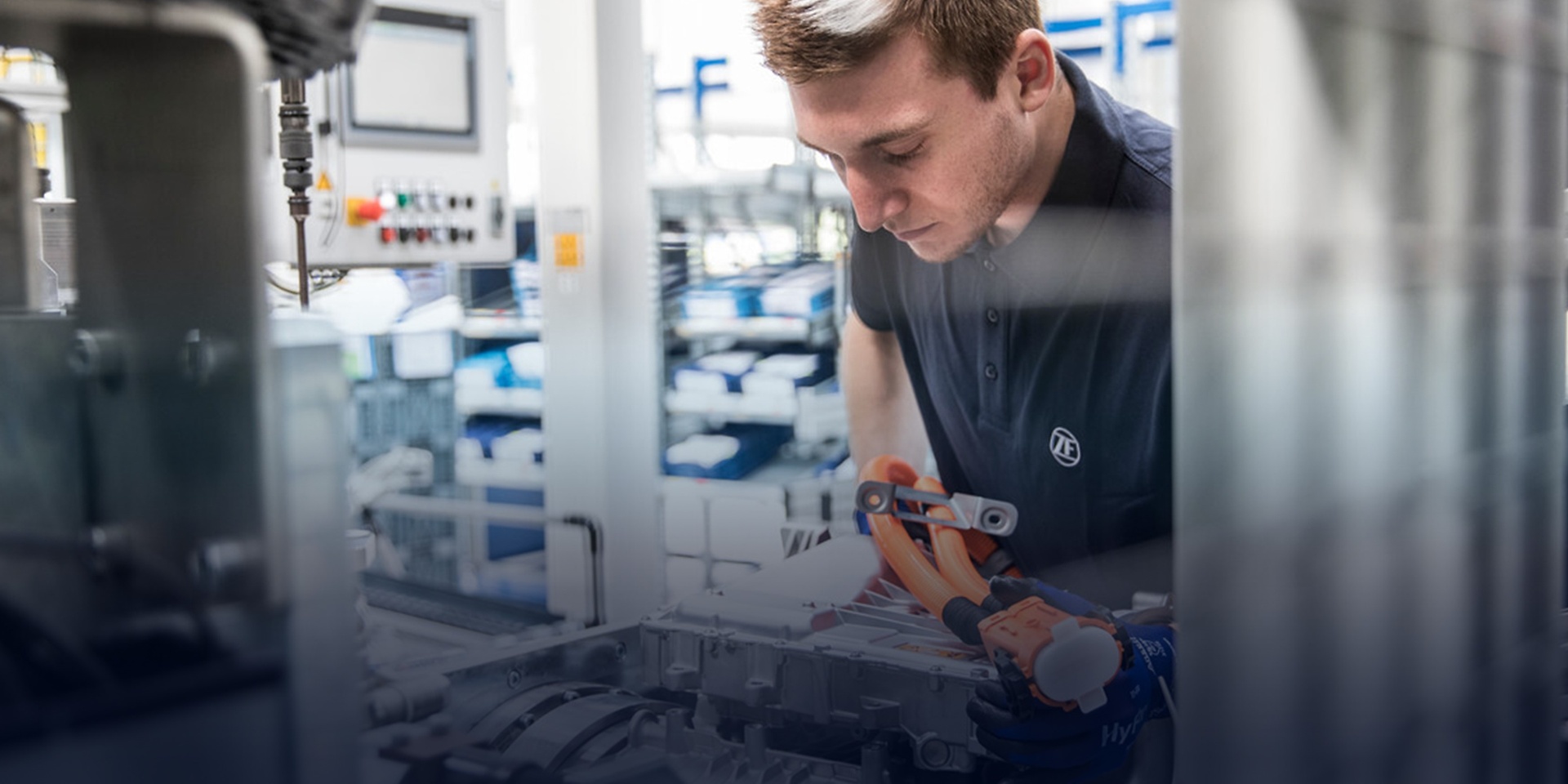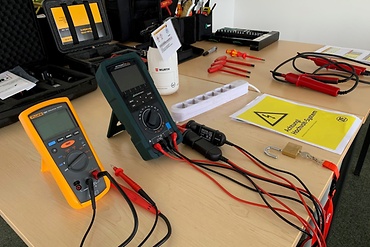
Contributed by Florian Freund
July 21, 2021
3 minutes read
The inverter and the way it works

The inverter - a component with many names
The “inverter”, “Power electronics”, “Converter” a versatile component with many names, the inverter is the central interface between the high voltage energy storage (high voltage battery) and the electric machine.
In the inverter, the direct voltage (DC) of the high voltage battery is converted into alternating voltage (AC).
The traction voltage is thus distributed to the phase connections of the electric machine, resulting in a three-phase current (three-phase alternating voltage). The three-phase current is generated by pulse width modulation (PWM).
First, let’s take a look inside the inverter: it consists of three half-bridge branches (or IGBTs – bipolar transistors with insulated gate electrode).

A clocked square-wave voltage is generated by a specific control of the transistors, whereby the transistor is switched on for half the period. The individual half-bridge branches are driven with a phase shift to each other, thus producing the sinusoidal alternating current.
The higher the pulse width of the square wave voltage, the higher the resulting alternating current. The alternating current in turn drives the electric motor. The next article by Philipp K. will show you exactly how this works.

In drive phases, the inverter supplies the motor with current. In recuperation phases (i.e. when braking) the inverter rectifies the three-phase current and thus charges the battery.
The power electronics regulate the frequency and current with which the motor is supplied and therefore the motor speed and torque. The inverter thus ensures that the electric drive functions effectively at all times.
In electric and hybrid vehicles, the power electronics are responsible for the efficiency and determine the range and effectiveness of the electric drive.
The range and drive performance are the two most important characteristics of an electric car – both are largely defined by the power electronics which, together with the electric motor, define the performance of the vehicle. Therefore, these are the most important components of a modern electric car, along with the high voltage storage system and electric motor – regardless of the vehicle category.
About the author

Florian Freund
Florian was Head of Connectivity Solutions at ZF Aftermarket until 2022. His position with the #zfexperts:
“Driving the progress of electric mobility isn´t just my job, it´s my passion.”



